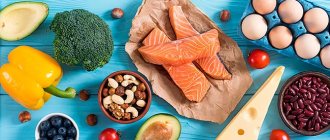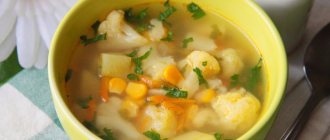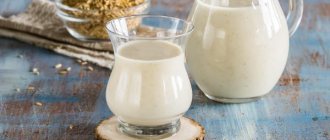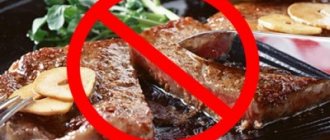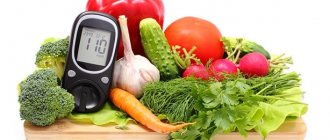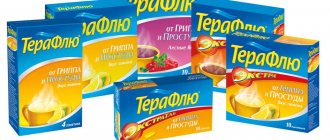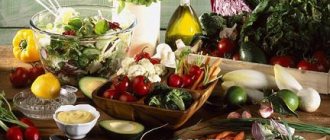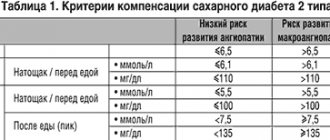The basis for a quality life with diabetes for patients is diet therapy. For prediabetes and mild type 2 diabetes mellitus, diet is used as the first line of treatment along with physical activity. To maintain normal carbohydrate metabolism in patients with high blood sugar, the ninth Pevzner diet is used. A Soviet nutritionist professor compiled a therapeutic diet that is used by diabetologists and endocrinologists to this day. Those who have been diagnosed (or suspected) with moderate or mild diabetes should definitely familiarize themselves with the rules of nutritional therapy.
General rules
What is diabetes mellitus and what diet is indicated for this disease? Diabetes mellitus is a disease that occurs when the pancreas does not produce enough insulin. It often develops with a hereditary predisposition, and one of the factors contributing to its development is overeating, excess consumption of fats and simple carbohydrates. The disease is based on carbohydrate metabolism disorders: poor absorption of glucose by tissues, increased formation of it from fats, proteins and glycogen .
As a result, there is an increase in blood sugar and its determination in the urine. Diabetics are also characterized by disorders of fat metabolism and accumulation of fat oxidation products in the blood - ketone bodies .
Diabetes mellitus is complicated by atherosclerosis , fatty liver , and kidney damage. Nutrition is a therapeutic factor in mild forms of the disease, the main point in moderate diabetes, and necessary for the treatment of severe forms while taking insulin and oral hypoglycemic drugs.
Patients are prescribed Diet No. 9, Table No. 9 according to Pevzner or its variations. This medical diet provides for the normalization of carbohydrate metabolism, and a balanced diet prevents disorders of fat metabolism. Dietary Table No. 9 is distinguished by a moderately reduced energy value due to a significant reduction in carbohydrates (easily digestible, simple) and fats. Sugar and confectionery products are excluded, salt and cholesterol . The amount of proteins is within the physiological norm. Therapeutic nutrition is prescribed by a doctor depending on the degree of hyperglycemia , the patient’s weight and concomitant diseases.
With normal weight, the daily calorie intake is 2300-2500 kcal, 90-100 g of protein, 75-80 g of fat and 300-350 g of carbohydrates, which, at the discretion of the doctor, is distributed between intake with bread or cereals and vegetables.
Nutrition is of particular importance when combined with obesity . Weight loss has a beneficial effect on the course of diabetes - reduced sensitivity to insulin . If you are overweight, calorie content is reduced to 1700 kcal due to a significant restriction of carbohydrates to 120 g per day. In this case, the patient receives 110 g of protein and 80 g of fat. The patient is also shown fasting diets and days.
Diet table No. 9 for mild diabetes mellitus
- sugar;
- preserves, jams;
- confectionery;
- ice cream;
- syrups;
- sweet fruits and vegetables;
- pasta;
- White bread.
It is recommended to limit or exclude:
- potatoes, as a highly starchy product;
- carrots (for the same reasons);
- tomatoes due to their high glucose content;
- beets (has a high glycemic index, after its consumption there is a jump in blood sugar levels).
Since nutrition for diabetes is based on limiting carbohydrates, it is advisable to choose even fruits with a glycemic index (GI) of up to 55: grapefruits, lingonberries, apricots, cherry plums, apples, cranberries, peaches, plums, cherries, sea buckthorn, red currants, gooseberries. But even these fruits should be consumed in limited quantities (serving up to 200 g).
When consuming foods with a high GI, blood sugar levels rise greatly, which causes increased insulin . It should also be taken into account that heat treatment of vegetables increases the GI, so stewed zucchini, eggplant, and cabbage can adversely affect sugar levels.
It must be remembered that sugar and its products are excluded in mild cases of the disease, and against the background of insulin therapy for moderate and severe diabetes mellitus, 20-30 g of sugar are allowed. Thus, the treatment table is modified by the doctor depending on the severity of the disease, the intensity of the patient’s work, weight, age and insulin therapy. This is done by regulating carbohydrate content.
In all cases, be sure to include in the diet:
- eggplant;
- red salad pepper due to its high vitamin ;
- pumpkin (helps reduce glucose);
- zucchini and squash, which normalize carbohydrate metabolism;
- lipotropic products (cottage cheese, oatmeal, soy).
Since carbohydrates must be present in the diet and provide 55% of the daily energy value, it is necessary to include sources of slowly absorbed carbohydrates with dietary fiber: wholemeal bread, legumes, whole grain cereals, vegetables, fruits.
It is advisable to adhere to the following distribution of the energy value of the diet:
- 20% should be for breakfast;
- 10% - for second breakfast;
- 30% - for lunch;
- 10% - afternoon snack;
- 20% - dinner;
- 10% on overnight meals.
The diet includes xylitol , fructose , or sorbitol at the expense of total carbohydrates. For taste, it is allowed to add saccharin .
Xylitol is equivalent in sweetness to regular sugar and its daily dose is no more than 30 g.
Fructose has low calorie content and low GI, and is twice as sweet as sugar, so adding 1 tsp is enough. in tea. With this dietary diet, the amount of salt is limited (12 g per day), and according to indications (for nephropathy and hypertension ) it is further reduced (2.8 g per day).
What unhealthy foods can you eat little by little?
Treatment table 9 contains foods that are allowed to be consumed in moderation by people diagnosed with type I diabetes. These include calf liver, potatoes, sweet fruits (dates, melons and watermelons), some herbs and spices (black pepper, horseradish, mustard), coffee with milk and decaffeinated coffee drinks (with chicory). As the disease progresses, these products should be abandoned.
These foods can be eaten, but in fairly moderate doses.
Varieties
Basic Table No. 9 is prescribed for a short period of time to determine tolerance to carbohydrates and to select doses of oral medications in cases where diet fails to normalize sugar levels. During the trial diet, fasting sugar is checked once every 3-5 days. When test results are normalized, after 2-3 weeks the diet is gradually expanded, adding 1 XE (bread unit) every week.
One unit of bread corresponds to 12-15 g of carbohydrates and is contained in 25-30 g of bread, 0.5 cup of buckwheat porridge, 1 apple, 2 pcs. prunes Having expanded it by 12 XE, it is prescribed for 2 months, after which another 4 XE are added. Further expansion of the diet is carried out after 1 year. The table is also indicated for ongoing use in mild to moderate type 2 diabetes
Diet 9A is recommended for mild to moderate forms of non-insulin-dependent diabetes, but patients obesity
Table No. 9B is indicated for patients with severe insulin-dependent diabetes, and it differs from the previous ones in its increased carbohydrate content (400-450 g) due to the consumption of bread, potatoes, cereals, vegetables and fruits. The amount of proteins and fats has been slightly increased. We can say that the diet is close in composition to a rational table. Its energy value is 2700-3100 kcal. Instead of sugar, use sweeteners and 20-30 g of sugar.
If the patient administers insulin in the morning and afternoon, then 65-70% of carbohydrates should come from these meals.
After administering insulin, food should be taken twice - after 15-20 minutes and after 2.5-3 hours, when the maximum effect of insulin is noted. This is ensured by fractional meals with the intake of carbohydrate foods (porridge, potatoes, fruits, fruit juices, bread) for the 2nd breakfast and afternoon snack.
Indications
Table 9 is practiced for the following diagnoses:
- bronchial asthma;
- rheumatism;
- hives;
- allergy;
- polyarthritis;
- diabetes mellitus type 2.
The patient’s nutrition is regulated depending on the disease and its neglect. Gender and age do not matter.
The diet allows you to:
- normalize sugar levels;
- reduce blood cholesterol;
- stabilize blood pressure;
- eliminate swelling.
Table 9 is allowed during pregnancy in case of gestational diabetes. The menu is developed by a therapist, endocrinologist and gynecologist.
Authorized Products
The consumption of rye bread, wheat bread (from second grade flour), with bran up to 300 g per day is provided.
First courses can be made with weak meat or vegetable broth. Preference should be given to vegetable soups (borscht, cabbage soup), okroshka, mushroom soup; soups with meatballs and cereals are also allowed. Potatoes in soups may be present in limited quantities.
Proper nutrition for diabetes
Dietary food includes all vegetables that are used raw or stewed (as side dishes). The emphasis is on low-carbohydrate vegetables (pumpkin, zucchini, eggplant, cucumbers, lettuce, cabbage, squash). Potatoes are allowed with restrictions taking into account the carbohydrate norm for each patient individually (most often no more than 200 g in all dishes). Carrots and beets are high in carbohydrates. With the doctor's permission, these vegetables are also included in the diet.
Lean meats and chicken are allowed. It is better to cook meat dishes boiled or baked to reduce the calorie content of food. When it comes to fish, you should choose dietary types: pike perch, cod, hake, pollock, pike, navaga. The amount of cereal is limited to the norm for each patient (usually 8-10 tablespoons per day) - buckwheat, barley, pearl barley, millet and oatmeal; legumes are allowed (lentils are preferable). If you have eaten pasta (in limited quantities and occasionally), then on this day you need to reduce the amount of bread.
Fermented milk drinks (low-fat kefir, yogurt) should be included in the diet daily. Milk and low-fat cottage cheese are consumed in their natural form and dishes are prepared from them: milk porridges, casseroles, soufflés. Mild cheese with a fat content of no more than 30% is allowed in small quantities; sour cream is added only to dishes. Butter and various vegetable oils should be added to prepared dishes. Eggs - one per day, soft-boiled or in the form of an omelet. Drinks allowed: coffee with milk, tea with sweetener, vegetable juices, rosehip decoction.
Sweet and sour berries are allowed in any form (fresh, compotes, jellies, mousses, xylitol jam). If you use xylitol , then no more than 30 g per day, fructose is allowed 1 tsp. three times a day (add to drinks). Honey 1 tsp. 2 times a day. You can eat confectionery products (sweets, waffles, cookies) with sugar substitutes. But even in this case, there is a norm - 1-2 candies twice a week.
Table of permitted products
| Proteins, g | Fats, g | Carbohydrates, g | Calories, kcal | |
Vegetables and greens | ||||
| zucchini | 0,6 | 0,3 | 4,6 | 24 |
| cabbage | 1,8 | 0,1 | 4,7 | 27 |
| sauerkraut | 1,8 | 0,1 | 4,4 | 19 |
| cauliflower | 2,5 | 0,3 | 5,4 | 30 |
| cucumbers | 0,8 | 0,1 | 2,8 | 15 |
| radish | 1,2 | 0,1 | 3,4 | 19 |
| tomatoes | 0,6 | 0,2 | 4,2 | 20 |
| pumpkin | 1,3 | 0,3 | 7,7 | 28 |
Fruits | ||||
| apricots | 0,9 | 0,1 | 10,8 | 41 |
| watermelon | 0,6 | 0,1 | 5,8 | 25 |
| cherry | 0,8 | 0,5 | 11,3 | 52 |
| pears | 0,4 | 0,3 | 10,9 | 42 |
| nectarine | 0,9 | 0,2 | 11,8 | 48 |
| peaches | 0,9 | 0,1 | 11,3 | 46 |
| plums | 0,8 | 0,3 | 9,6 | 42 |
| apples | 0,4 | 0,4 | 9,8 | 47 |
Berries | ||||
| cowberry | 0,7 | 0,5 | 9,6 | 43 |
| blackberry | 2,0 | 0,0 | 6,4 | 31 |
| raspberries | 0,8 | 0,5 | 8,3 | 46 |
| currant | 1,0 | 0,4 | 7,5 | 43 |
Cereals and porridges | ||||
| buckwheat (kernel) | 12,6 | 3,3 | 62,1 | 313 |
| oat groats | 12,3 | 6,1 | 59,5 | 342 |
| corn grits | 8,3 | 1,2 | 75,0 | 337 |
| pearl barley | 9,3 | 1,1 | 73,7 | 320 |
| millet cereal | 11,5 | 3,3 | 69,3 | 348 |
| barley grits | 10,4 | 1,3 | 66,3 | 324 |
Bakery products | ||||
| Rye bread | 6,6 | 1,2 | 34,2 | 165 |
| bran bread | 7,5 | 1,3 | 45,2 | 227 |
| doctor's bread | 8,2 | 2,6 | 46,3 | 242 |
| whole grain bread | 10,1 | 2,3 | 57,1 | 295 |
Confectionery | ||||
| diabetic crackers | 10,5 | 5,7 | 73,1 | 388 |
Raw materials and seasonings | ||||
| xylitol | 0,0 | 0,0 | 97,9 | 367 |
| honey | 0,8 | 0,0 | 81,5 | 329 |
| fructose | 0,0 | 0,0 | 99,8 | 399 |
Dairy | ||||
| milk | 3,2 | 3,6 | 4,8 | 64 |
| kefir | 3,4 | 2,0 | 4,7 | 51 |
| sour cream 15% (low fat) | 2,6 | 15,0 | 3,0 | 158 |
| curdled milk | 2,9 | 2,5 | 4,1 | 53 |
| acidophilus | 2,8 | 3,2 | 3,8 | 57 |
| yogurt | 4,3 | 2,0 | 6,2 | 60 |
Cheeses and cottage cheese | ||||
| cottage cheese 0.6% (low fat) | 18,0 | 0,6 | 1,8 | 88 |
| cottage cheese 1.8% (low-fat) | 18,0 | 1,8 | 3,3 | 101 |
| cottage cheese 5% | 17,2 | 5,0 | 1,8 | 121 |
Meat products | ||||
| beef | 18,9 | 19,4 | 0,0 | 187 |
| beef tongue | 13,6 | 12,1 | 0,0 | 163 |
| veal | 19,7 | 1,2 | 0,0 | 90 |
| rabbit | 21,0 | 8,0 | 0,0 | 156 |
Bird | ||||
| chicken | 16,0 | 14,0 | 0,0 | 190 |
| turkey | 19,2 | 0,7 | 0,0 | 84 |
Eggs | ||||
| chicken eggs | 12,7 | 10,9 | 0,7 | 157 |
Fish and seafood | ||||
| herring | 16,3 | 10,7 | — | 161 |
Oils and fats | ||||
| butter | 0,5 | 82,5 | 0,8 | 748 |
| corn oil | 0,0 | 99,9 | 0,0 | 899 |
| olive oil | 0,0 | 99,8 | 0,0 | 898 |
| sunflower oil | 0,0 | 99,9 | 0,0 | 899 |
| ghee | 0,2 | 99,0 | 0,0 | 892 |
Non-alcoholic drinks | ||||
| mineral water | 0,0 | 0,0 | 0,0 | — |
| coffee | 0,2 | 0,0 | 0,3 | 2 |
| instant chicory | 0,1 | 0,0 | 2,8 | 11 |
| black tea without sugar | 0,1 | 0,0 | 0,0 | — |
Juices and compotes | ||||
| carrot juice | 1,1 | 0,1 | 6,4 | 28 |
| plum juice | 0,8 | 0,0 | 9,6 | 39 |
| tomato juice | 1,1 | 0,2 | 3,8 | 21 |
| pumpkin juice | 0,0 | 0,0 | 9,0 | 38 |
| rose hip juice | 0,1 | 0,0 | 17,6 | 70 |
| Apple juice | 0,4 | 0,4 | 9,8 | 42 |
| * data is per 100 g of product | ||||
Sweeteners
This issue remains controversial, since diabetic patients do not feel an urgent need for them, but use them only to satisfy their taste preferences and habit of adding sugar to dishes and drinks. In principle, there are no artificial and natural sugar substitutes with 100% proven safety. The main requirement for them is no increase in blood sugar or a slight increase in the indicator.
Currently, with strict blood sugar control, 50% fructose, stevia and honey can be used as sweeteners.
Fructose
Fructose 50%. Fructose does not require insulin to metabolize, so it is safe in this regard. It has 2 times less calories and 1.5 times more sweetness compared to regular sugar. It has a low GI (19) and does not cause a rapid increase in blood sugar.
The consumption rate is no more than 30-40 grams. per day. When consuming more than 50 g. fructose per day decreases the liver's sensitivity to insulin. Available in powder and tablet form.
Stevia
Stevia is a zero-calorie, sugar-replacement supplement made from the leaves of the perennial stevia plant. The plant synthesizes sweet glycosides, such as stevioside, a substance that gives the leaves and stems a sweet taste, 20 times sweeter than regular sugar. Can be added to prepared dishes or used in cooking. It is believed that stevia helps restore the pancreas and helps produce its own insulin without affecting blood sugar.
Officially approved as a sweetener by WHO experts in 2004. The daily norm is up to 2.4 mg/kg (no more than 1 tablespoon per day). If the supplement is abused, toxic effects and allergic reactions may develop. Available in the form of powder, liquid extracts and concentrated syrups.
Honey
Natural bee honey. Contains glucose, fructose and a small proportion of sucrose (1-6%). Insulin is needed to metabolize sucrose, but the content of this sugar in honey is insignificant, and therefore the burden on the body is small.
Rich in vitamins and biologically active substances, improves immunity. With all this, it is a high-calorie carbohydrate product with a high GI (about 85). For mild diabetes, 1-2 teaspoons of honey with tea per day is acceptable, after meals, slowly dissolving, but not adding to a hot drink.
Fully or partially limited products
Excluded from the diet: baked goods, sweet desserts and ice cream, curd mass and sweet curd cheeses, rice, semolina and pasta. Milk soups with these products are also not allowed.
You should not consume sweet juices, preserves and jams (the exception is these preparations with xylitol), and lemonades with sugar.
It is better to avoid fried foods, eating spicy and too salty foods, and hot sauces.
It is advisable not to consume canned food (fish and meat).
Fatty broths and fatty meats, smoked meats, sausages, fatty sauces and cream are prohibited.
Liver, egg yolks, and honey are allowed in limited quantities.
Table of prohibited products
| Proteins, g | Fats, g | Carbohydrates, g | Calories, kcal | |
Vegetables and greens | ||||
| carrot | 1,3 | 0,1 | 6,9 | 32 |
| beet | 1,5 | 0,1 | 8,8 | 40 |
| horseradish | 3,2 | 0,4 | 10,5 | 56 |
Fruits | ||||
| pineapples | 0,4 | 0,2 | 10,6 | 49 |
| bananas | 1,5 | 0,2 | 21,8 | 95 |
| melon | 0,6 | 0,3 | 7,4 | 33 |
| mango | 0,5 | 0,3 | 11,5 | 67 |
Berries | ||||
| grape | 0,6 | 0,2 | 16,8 | 65 |
Nuts and dried fruits | ||||
| raisin | 2,9 | 0,6 | 66,0 | 264 |
| dried figs | 3,1 | 0,8 | 57,9 | 257 |
| dates | 2,5 | 0,5 | 69,2 | 274 |
Cereals and porridges | ||||
| semolina | 10,3 | 1,0 | 73,3 | 328 |
| rice | 6,7 | 0,7 | 78,9 | 344 |
| sago | 1,0 | 0,7 | 85,0 | 350 |
Flour and pasta | ||||
| pasta | 10,4 | 1,1 | 69,7 | 337 |
| noodles | 12,0 | 3,7 | 60,1 | 322 |
Bakery products | ||||
| wheat bread | 8,1 | 1,0 | 48,8 | 242 |
Confectionery | ||||
| jam | 0,3 | 0,2 | 63,0 | 263 |
| candies | 4,3 | 19,8 | 67,5 | 453 |
| pastry cream | 0,2 | 26,0 | 16,5 | 300 |
Ice cream | ||||
| ice cream | 3,7 | 6,9 | 22,1 | 189 |
Chocolate | ||||
| chocolate | 5,4 | 35,3 | 56,5 | 544 |
Raw materials and seasonings | ||||
| mustard | 5,7 | 6,4 | 22,0 | 162 |
| mayonnaise | 2,4 | 67,0 | 3,9 | 627 |
| sugar | 0,0 | 0,0 | 99,7 | 398 |
Dairy | ||||
| baked milk | 3,0 | 6,0 | 4,7 | 84 |
| cream | 2,8 | 20,0 | 3,7 | 205 |
| sour cream 25% (classic) | 2,6 | 25,0 | 2,5 | 248 |
| sour cream 30% | 2,4 | 30,0 | 3,1 | 294 |
| Ryazhenka 6% | 5,0 | 6,0 | 4,1 | 84 |
| ayran (tan) | 1,1 | 1,5 | 1,4 | 24 |
| fruit yogurt 3.2% | 5,0 | 3,2 | 8,5 | 85 |
Cheeses and cottage cheese | ||||
| glazed cheese | 8,5 | 27,8 | 32,0 | 407 |
| curd | 7,1 | 23,0 | 27,5 | 341 |
Meat products | ||||
| pork | 16,0 | 21,6 | 0,0 | 259 |
| salo | 2,4 | 89,0 | 0,0 | 797 |
Bird | ||||
| smoked chicken | 27,5 | 8,2 | 0,0 | 184 |
| duck | 16,5 | 61,2 | 0,0 | 346 |
| smoked duck | 19,0 | 28,4 | 0,0 | 337 |
| goose | 16,1 | 33,3 | 0,0 | 364 |
Fish and seafood | ||||
| smoked fish | 26,8 | 9,9 | 0,0 | 196 |
| canned fish | 17,5 | 2,0 | 0,0 | 88 |
| sardine in oil | 24,1 | 13,9 | — | 221 |
| cod (liver in oil) | 4,2 | 65,7 | 1,2 | 613 |
Oils and fats | ||||
| animal fat | 0,0 | 99,7 | 0,0 | 897 |
| cooking fat | 0,0 | 99,7 | 0,0 | 897 |
Non-alcoholic drinks | ||||
| lemonade | 0,0 | 0,0 | 6,4 | 26 |
| Pepsi | 0,0 | 0,0 | 8,7 | 38 |
Juices and compotes | ||||
| grape juice | 0,3 | 0,0 | 14,0 | 54 |
| * data is per 100 g of product | ||||
Therapeutic Diet Menu No. 9 (Diet)
Diet menu No. 9 for diabetes should include 5-6 meals a day, in which the amount of carbohydrates should be evenly distributed. For each patient, the amount of carbohydrates and foods is specified by the doctor and their daily count is important.
An approximate set of products for each day might look like this:
- butter 20 g, vegetable oil 30 g;
- meat and fish 100-130 g each;
- cottage cheese 200 g;
- milk and fermented milk products - up to 400 ml;
- sour cream 20 g;
- oatmeal (buckwheat) 50 g;
- vegetables up to 800 g (tomatoes 20 g, carrots 75 g, zucchini 250 g, cabbage 250 g, potatoes 200 g);
- fruits 300 g (mainly apples 200 g, grapefruits 100 g);
- rye bread from 100 to 200 g.
The menu for every day of the 9th table diet needs to be adjusted for yourself, taking into account the amount of carbohydrates allowed by your doctor and the daily calorie content of food. Below is a sample menu for a week according to generally accepted recommendations for therapeutic nutrition.
When creating a weekly menu for yourself, try to diversify it, use the permitted amount of sweeteners that can be added to drinks and dishes (casseroles, jellies) and use fruit snacks more often, then the diet will be easily tolerated.
Monday
| Breakfast |
|
| Lunch |
|
| Dinner |
|
| Afternoon snack |
|
| Dinner |
|
| For the night |
|
Tuesday
| Breakfast |
|
| Lunch |
|
| Dinner |
|
| Afternoon snack |
|
| Dinner |
|
| For the night |
|
Wednesday
| Breakfast |
|
| Lunch |
|
| Dinner |
|
| Afternoon snack |
|
| Dinner |
|
| For the night |
|
Thursday
| Breakfast |
|
| Lunch |
|
| Dinner |
|
| Afternoon snack |
|
| Dinner |
|
| For the night |
|
Friday
| Breakfast |
|
| Lunch |
|
| Dinner |
|
| Afternoon snack |
|
| Dinner |
|
| For the night |
|
Saturday
| Breakfast |
|
| Lunch |
|
| Dinner |
|
| Afternoon snack |
|
| Dinner |
|
| For the night |
|
Sunday
| Breakfast |
|
| Lunch |
|
| Dinner |
|
| Afternoon snack |
|
| Dinner |
|
| For the night |
|
Recipes
First meal
Summer diet soup
Broth, vegetable oil, onions, carrots, cabbage (cauliflower and broccoli), potatoes, green beans, greens.
Dip the potatoes into the broth, after 10 minutes add cabbage and chopped green beans. Sauté onions and chopped carrots in a frying pan with butter. Add the sauté to the vegetables and cook until tender. When serving, sprinkle with herbs.
Vegetable soup with meatballs
Vegetable broth, butter, beef, carrots, onions, cabbage (cauliflower broccoli), chicken protein, greens.
Make minced beef, add onions, dill, chicken protein, salt and pepper. Form meatballs. Put carrots, cabbage, and onions sautéed in vegetable oil into the broth, and when the broth boils, drop the meatballs into it. Cook until the meatballs are ready, serve with herbs.
Second courses
Steamed veal cutlets
Veal, milk, onion, butter.
Pass the meat and onion through a meat grinder. Pour in milk and melted butter, add salt. You can add grated carrots to give it a nice color. Place the cutlets on a steamer grid. Cook for 15-20 minutes. Serve with stewed vegetables.
Fish baked with sour cream
Pike perch, sour cream, vegetable oil, salt, parsley.
Cut the fish into portions and place on a baking sheet. Add salt, place onion rings on it, sprinkle with vegetable oil and grease with sour cream. Bake for 25-30 minutes. Serve with lettuce or any vegetables.
Potato zrazy
Beef, potatoes, salt, onions, vegetable oil, herbs.
Pass the boiled meat and sautéed onions through a meat grinder. Grate the boiled potatoes and add salt. Form circles from the potato mixture and place minced meat in the middle, form into balls, sprinkle with cheese. Cook in a steam bath, you can bake.
Dessert
Cottage cheese casserole with pumpkin
Pumpkin, cream, cottage cheese, eggs, vanillin to taste, xylitol.
Cut the pumpkin into cubes. Mix cottage cheese, cream, eggs and xylitol using a blender. Add pumpkin to the curd mixture. Place the mixture in a greased baking dish and bake for about 30 minutes at 180°C.
Diet 9 during pregnancy and lactation
Diabetes mellitus can have a latent form and first manifests itself during pregnancy . This is true diabetes mellitus . Gestational diabetes may occur , which appears during pregnancy due to a decrease in tissue sensitivity to insulin. After delivery, there is a possibility of normalization of carbohydrate metabolism. However, there is a risk of developing diabetes in the future.
High glucose levels pose a danger to mother and child: risk of miscarriage , pyelonephritis , fundus vascular complications and complications during childbirth. Therefore, it is so important for pregnant women to regularly monitor sugar levels and follow nutritional recommendations if they increase.
- The diet completely excludes “simple” carbohydrates, which cause a sharp increase in blood sugar, and limits the amount of complex carbohydrates. Eliminate sweets, sugary carbonated drinks, white bread, grapes, bananas, sweet juices and dried fruits. Eat foods that contain fiber, which slows down the flow of glucose into the blood. Its sources are vegetables and unsweetened fruits.
- Pasta and potatoes should be present in small quantities.
- It is recommended to eat every two hours. There should be three main meals and two additional ones. After dinner, you can drink half a glass of kefir or eat half an apple.
- Throughout the day, constantly measure your glucose level after meals (to do this, you need to purchase a glucometer).
- Eliminate fatty foods and fried foods, fast food products. It is recommended to avoid sausage and smoked meats.
- Do not limit fluid intake.
- Steaming or stewing using vegetable oil is preferred.
Compliance with these recommendations is necessary even after pregnancy , for at least two months, followed by a blood sugar examination and consultation with an endocrinologist.
Reviews and results
This therapeutic diet involves a varied diet, based on foods with a low glycemic index, which help effectively maintain sugar levels. On the recommendation of a doctor, the diet can be expanded. Many patients appreciated the effectiveness of the therapeutic diet.
- “... I have been suffering from diabetes for many years. I can admit that before I didn’t pay much attention to nutrition, and there were sharp jumps in sugar, which caused complications - my vision deteriorated. Now I can say that a diet for diabetes is necessary. For many years now I have been keeping my sugar within the acceptable limit for diabetics. Nutrition also helps not to gain weight, which is very important as you age”;
- “... We prescribed this diet during pregnancy, when we were diagnosed with gestational diabetes mellitus.” She followed it very strictly, as she was afraid for the child and complications during childbirth. I also monitored my sugar levels - I measured them after every meal. After giving birth, the diabetes went away. She donated blood and urine several times. Everything is fine";
- “... I suffer from diabetes, so this is my main diet. I have repeatedly noticed a deterioration in my condition if I allowed myself “liberties” in my diet—the sugar immediately creeps up. Now I’m taking pills, and I’m allowed to increase the amount of porridge and bread, I can even eat a bun once a week.”
Contraindications
Contraindications to the diet relate mainly to negative reactions to certain foods:
- fresh fruits should not be consumed by people with pathologies of the gastrointestinal tract or gallbladder;
- with increased blood clotting and a tendency to form blood clots, corn, carrots, green peas, apples and strawberries should be excluded;
- for pancreatitis, raw fruits and vegetables are prohibited;
- In case of increased stomach acidity, it is worth limiting the consumption of citrus fruits.
You cannot prescribe a therapeutic diet for yourself. In any case, competent consultation with a doctor is necessary.
